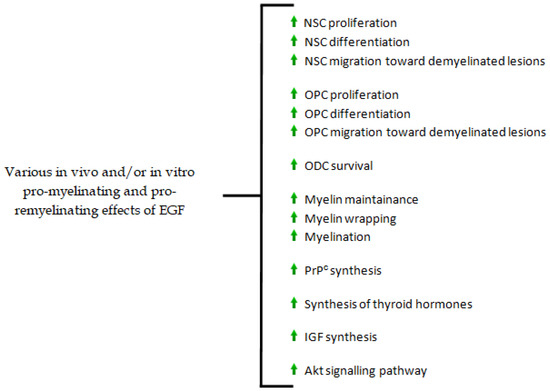Nervous System Inflammation
A topical collection in Biomedicines (ISSN 2227-9059). This collection belongs to the section "Neurobiology and Clinical Neuroscience".
Viewed by 5481Editor
Interests: demyelinating disorders; multiple sclerosis; epidemiology and genetic aspects; therapeutic trials
Special Issues, Collections and Topics in MDPI journals
Topical Collection Information
Dear Colleagues,
The concept of nervous system inflammation has ample connotations ranging from infectious and post-infectious processes to demyelinating disorders. Autoimmune mechanisms play a fundamental role in many of these pathologies, affecting CNS structures and the peripheral nervous system. Dysfunction of the innate and the adaptive immune systems participates mechanistically, while non-resolving, chronic or pervasive inflammation in the CNS may result in degeneration and loss of structure. The pathophysiology involved in many of these disorders leads to the theoretical utilization of diverse immunotherapies. Viral encephalitis (e.g., herpes human virus and ECHO) and other infections are sporadic, some acquiring a seasonal or regional apparition, while more common disorders such as multiple sclerosis (MS) and less common demyelinating diseases such as neuromyelitis optica spectrum disorders (NMOSD), myelin oligodendrocyte glycoprotein antibody disease (MOGAD), and acute disseminated encephalomyelitis (ADEM), this latter usually a post-infectious development, have a more consistent epidemiologic pattern. Serious, albeit rare neuroimmune conditions include paraneoplastic and autoimmune encephalitis, autoimmune epilepsies, and “idiopathic” transverse myelitis. Detecting neuronal cell surface antibodies is emphasized in inflammatory cerebral cases. CNS vasculitis, neurorheumatological disorders (e.g., Behçet’s disease, Sjögren’s syndrome, systemic lupus erythematosus), and neurosarcoidosis are considered in this topic. Specific investigations and careful differentiation of MRI patterns are of primary importance in the proper identification of these syndromes. Autoimmune polyradiculoneuropathies classically represented as Guillain–Barré syndrome and chronic inflammatory demyelinating polyneuropathy (CIDP) are prime examples of inflammatory diseases of the peripheral nervous system. Cerebrospinal fluid analysis, electrophysiological studies, highly sensitive nerve biopsy techniques, and autonomic dysfunction testing all are fundamental for the proper diagnosis and management of peripheral nervous system disease. Contributions to this Topical Collection will enrich knowledge and procure more options of management for the people afflicted by these diseases.
Prof. Víctor M. Rivera
Collection Editor
Manuscript Submission Information
Manuscripts should be submitted online at www.mdpi.com by registering and logging in to this website. Once you are registered, click here to go to the submission form. Manuscripts can be submitted until the deadline. All submissions that pass pre-check are peer-reviewed. Accepted papers will be published continuously in the journal (as soon as accepted) and will be listed together on the collection website. Research articles, review articles as well as short communications are invited. For planned papers, a title and short abstract (about 100 words) can be sent to the Editorial Office for announcement on this website.
Submitted manuscripts should not have been published previously, nor be under consideration for publication elsewhere (except conference proceedings papers). All manuscripts are thoroughly refereed through a single-blind peer-review process. A guide for authors and other relevant information for submission of manuscripts is available on the Instructions for Authors page. Biomedicines is an international peer-reviewed open access monthly journal published by MDPI.
Please visit the Instructions for Authors page before submitting a manuscript. The Article Processing Charge (APC) for publication in this open access journal is 2600 CHF (Swiss Francs). Submitted papers should be well formatted and use good English. Authors may use MDPI's English editing service prior to publication or during author revisions.
Keywords
- inflammation
- post-infectious disease
- demyelinating disorder
- viral encephalitis
- MS
- NMOSD
- MOGAD
- ADEM
- paraneoplastic encephalitis
- autoimmune encephalitis
- immunotherapies
- Guillain-Barré síndrome
- CIDP







